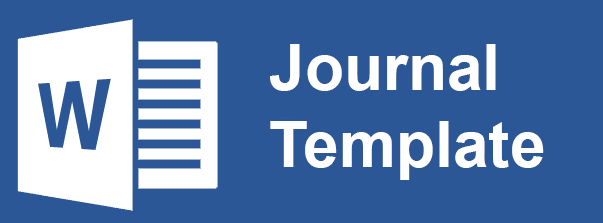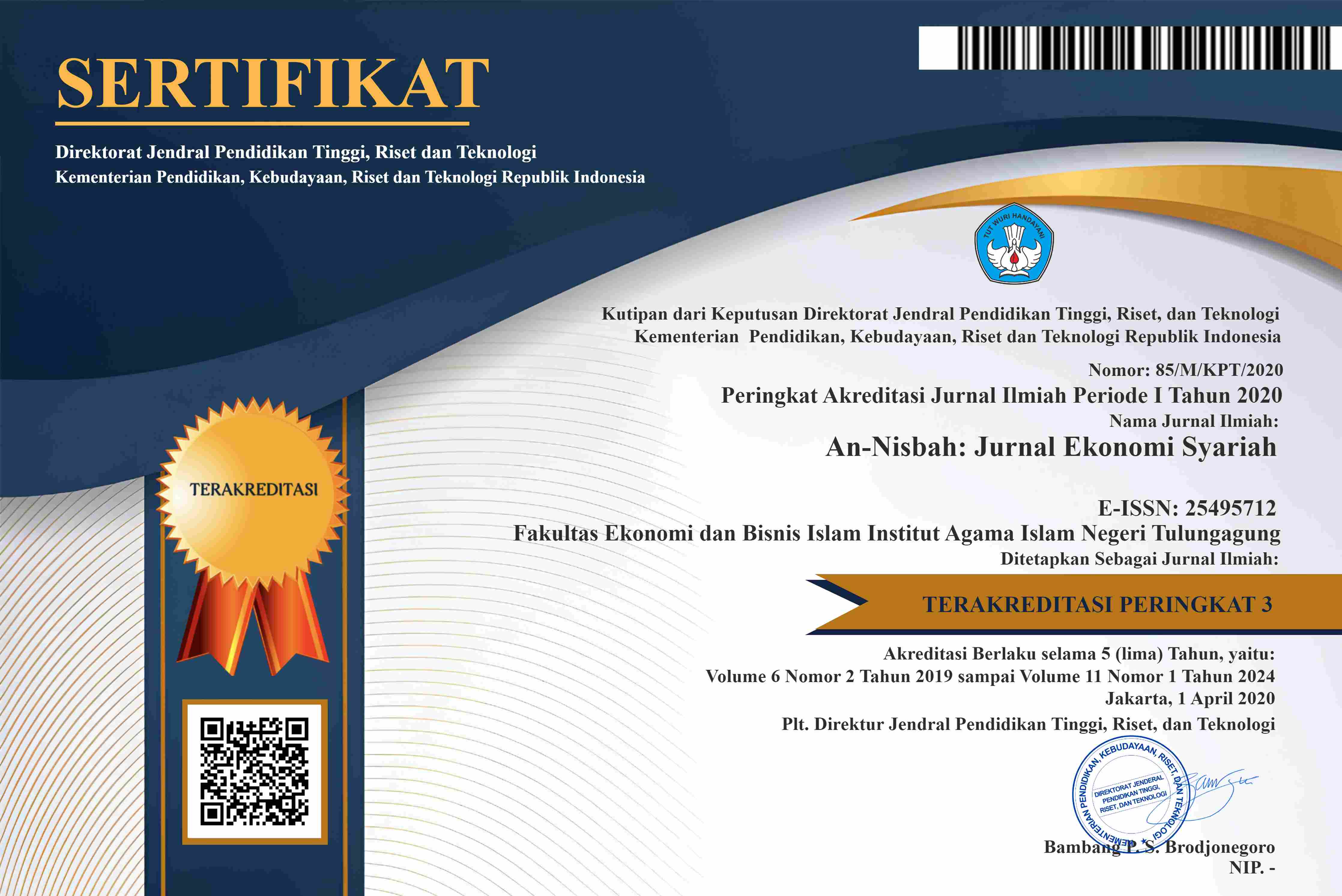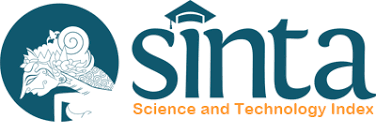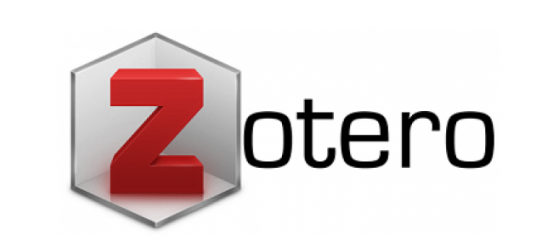THE URGENCY OF CENTRAL BANK DIGITAL CURRENCY (CBDC) IMPLEMENTATION; MAQĀSHĪD SYARĪ’AH PERSPECTIVE
Abstract
This study examines the urgency of the Central Bank Digital Currency (CBDC) with a maqashid Syariah perspective. The challenges of digital transactions have forced people to use cryptocurrencies without the use of asset assignments so that they have a big risk, this makes them illegal, while electronic money has not answered the challenges of digital transactions. The methodology used in writing this article is a descriptive qualitative method with a normative approach to analysis on maslahah and mafsadah contained in Maqashid sharia. The data used by the author is secondary data. The results of the study can be concluded that the implementation of Central Bank Digital Currency (CBDC) will provide more maslahah than mafsadah, while cryptocurrencies are currently widely traded freely by the Muslim community in general even though they are considered haram and illegal. This shows that the Central Bank Digital Currency (CBDC) has the urgency of its use in the economic practice of Muslims in general, with the same form but eliminating the bad elements contained in cryptocurrency, enforcing Islamic sharia, and saving the economy of the Muslim community according to Maqashid. sharia
Downloads
References
Andolfatto, David. “Assessing the Impact of Central Bank Digital Currency on Private Banks.” Federal Reserve Bank of St. Louis, Working Papers. Federal Reserve Bank of St. Louis, 2018. http://dx.doi.org/10.20955/wp.2018.025.
Ausop, Asep Zaenal, and Elsa Silvia Nur Aulia. “Teknologi Cryptocurrency Bitcoin Untuk Investasi Dan Transaksi Bisnis Menurut Syariat Islam.” Jurnal Sosioteknologi 17, no. 1 (2018): 74–92.
Chang, Soonpeel Edgar. “Legal Status of Cryptocurrency in Indonesia and Legal Analysis of the Business Activities in Terms of Cryptocurrency.” Brawijaya Law Journal 6, no. 1 (2019): 76–93.
Choi, Jeong-Il. “Introduction of the Internet-Only Bank and Development Direction Proposal.” Journal of Digital Convergence. The Korea Society of Digital Policy and Management, 2016. http://dx.doi.org/10.14400/jdc.2016.14.9.139.
Das, S. “Innovations in Digital Banking Service Brand Equity and Millennial Consumerism.” Digital Transformation and Innovative Services for … (2020). https://www.igi-global.com/chapter/innovations-in-digital-banking-service-brand-equity-and-millennial-consumerism/255075.
Departemen Agamag RI. Al Quran Dan Terjemahan. Al-Qur’an Terjemahan, 2020.
Hamid, Azwar. “Mekanisme Mata Uang Modern Dalam Islam.” Al-Masharif: Jurnal Ilmu Ekonomi dan Keislaman 5, no. 1 (2017): 16.
Hendarsyah, Decky. “Penggunaan Uang Elektronik Dan Uang Virtual Sebagai Pengganti Uang Tunai Di Indonesia.” IQTISHADUNA: Jurnal Ilmiah Ekonomi Kita 5, no. 1 (2016): 1–15. https://ejournal.stiesyariahbengkalis.ac.id/index.php/iqtishaduna/article/view/74.
Huda, Nurul, and Risman Hambali. “Risiko Dan Tingkat Keuntungan Investasi Cryptocurrency PENDAHULUAN Latar Belakang Di Era Revolusi 4 . 0 Perkembangan Dunia Teknologi Semakin Pesat Dan Telah Membawa Dunia Menuju Ke Arah Yang Baru Pada Hampir Keseluruh Aspek Kehidupan Manusia Termasuk Dala” 17, no. 1 (2020): 72–84.
Ilyas, Rahmat. “KONSEP UANG DALAM PERSPEKTIF EKONOMI ISLAM.” BISNIS 4, no. 1 (2016).
Ketterer, Juan Antonio, and Gabriela Andrade. “Digital Central Bank Money and the Unbundling of the Banking Function.” Inter-American Development Bank, 2016. http://dx.doi.org/10.18235/0000300.
Koumbarakis, Antonios, and Guenther Dobrauz-Saldapenna. “Central Bank Digital Currency: Benefits and Drawbacks.” SSRN Electronic Journal. Elsevier BV, 2019. http://dx.doi.org/10.2139/ssrn.3429037.
Kusuma, Teddy. “Cryptocurrency Dalam Perdagangan Berjangka Komoditi Di Indonesia Perspektif Hukum Islam.” Tsaqafah 16, no. 1 (2020): 109.
Made Santrupti Brahmi, I Nyoman Darmadha. “Legalitas Bitcoin Sebagai Alat Pembayaran Di Indonesia ” (2011).
Mancini-Griffoli, Tommaso, Maria Soledad Martinez Peria, Itai Agur, Anil Ari, John Kiff, Adina Popescu, and Celine Rochon. “Casting Light on Central Bank Digital Currency.” Cryptoassets. Oxford University Press, 2019. http://dx.doi.org/10.1093/oso/9780190077310.003.0012.
MUFARIH, M, R JAYADI, and ... “Factors Influencing Customers to Use Digital Banking Application in Yogyakarta, Indonesia.” The Journal of Asian … (2020). https://www.koreascience.or.kr/article/JAKO202029062616781.page.
Rohmati, Dani, Rachmasari Anggraini, and Tika Widiastuti. “Maqāṣid Al-Sharī‘ah Sebagai Landasan Dasar Ekonomi Islam.” Economica: Jurnal Ekonomi Islam 9, no. 2 (2018): 295.
Sulistiani, Siska Lis. “ANALISIS MAQASHID SYARIAH DALAM PENGEMBANGAN HUKUM INDUSTRI HALAL DI INDONESIA.” Law & Justice 3, no. 2 (2018).
Susanti, Ressi. “Sejarah Transformasi Uang Dalam Islam.” Aqlam: Journal of Islam and Plurality 2, no. 1 (2018): 33–42.
Trisakti, Universitas. “KEDUDUKAN HUKUM BITCOIN SEBAGAI MATA UANG VIRTUAL DI INDONESIA BERDASARKAN UNDANG-UNDANG NOMOR 7 TAHUN 2011 TENTANG MATA UANG Siti Nurbaiti A . Latar Belakang Dewasa Ini , Manusia Membutuhkan Banyak Bantuan Untuk Memberikan Kemudahan Dalam Menyelesaikan K,” no. 7 (2011): 1–26.
Zain, Muhammad Fuad. “MINING-TRADING CRYPTOCURRENCY DALAM HUKUM ISLAM.” Al-Manahij 12, no. 1 (2018).
The author has full rights to the articles that has been sent to An-Nisbah: Jurnal Ekonomi Syariah. The author is responsible for the originality of the articles and all the references used in the journal script.








